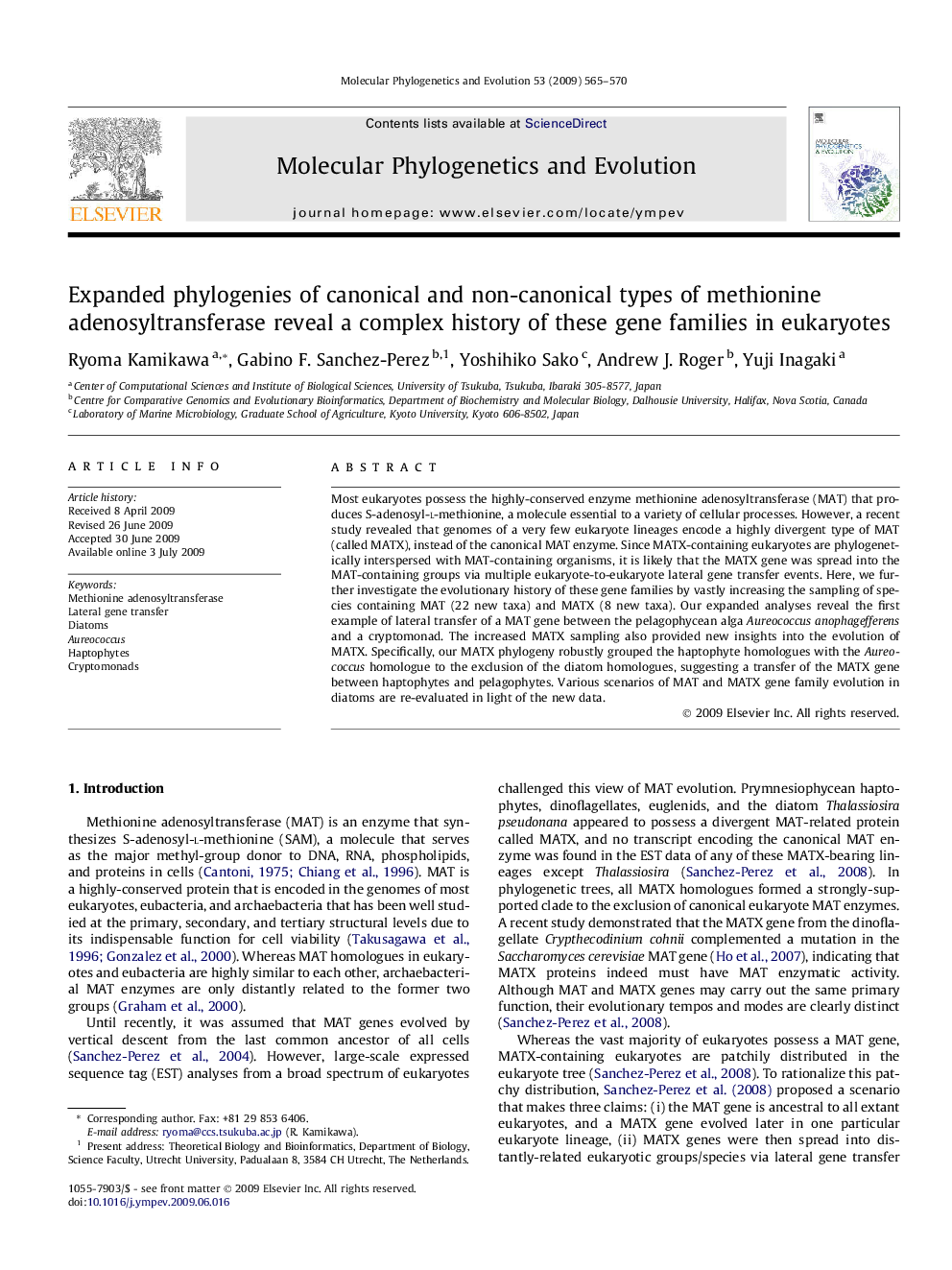| کد مقاله | کد نشریه | سال انتشار | مقاله انگلیسی | نسخه تمام متن |
|---|---|---|---|---|
| 2834347 | 1164306 | 2009 | 6 صفحه PDF | دانلود رایگان |

Most eukaryotes possess the highly-conserved enzyme methionine adenosyltransferase (MAT) that produces S-adenosyl-l-methionine, a molecule essential to a variety of cellular processes. However, a recent study revealed that genomes of a very few eukaryote lineages encode a highly divergent type of MAT (called MATX), instead of the canonical MAT enzyme. Since MATX-containing eukaryotes are phylogenetically interspersed with MAT-containing organisms, it is likely that the MATX gene was spread into the MAT-containing groups via multiple eukaryote-to-eukaryote lateral gene transfer events. Here, we further investigate the evolutionary history of these gene families by vastly increasing the sampling of species containing MAT (22 new taxa) and MATX (8 new taxa). Our expanded analyses reveal the first example of lateral transfer of a MAT gene between the pelagophycean alga Aureococcusanophagefferens and a cryptomonad. The increased MATX sampling also provided new insights into the evolution of MATX. Specifically, our MATX phylogeny robustly grouped the haptophyte homologues with the Aureococcus homologue to the exclusion of the diatom homologues, suggesting a transfer of the MATX gene between haptophytes and pelagophytes. Various scenarios of MAT and MATX gene family evolution in diatoms are re-evaluated in light of the new data.
Journal: Molecular Phylogenetics and Evolution - Volume 53, Issue 2, November 2009, Pages 565–570